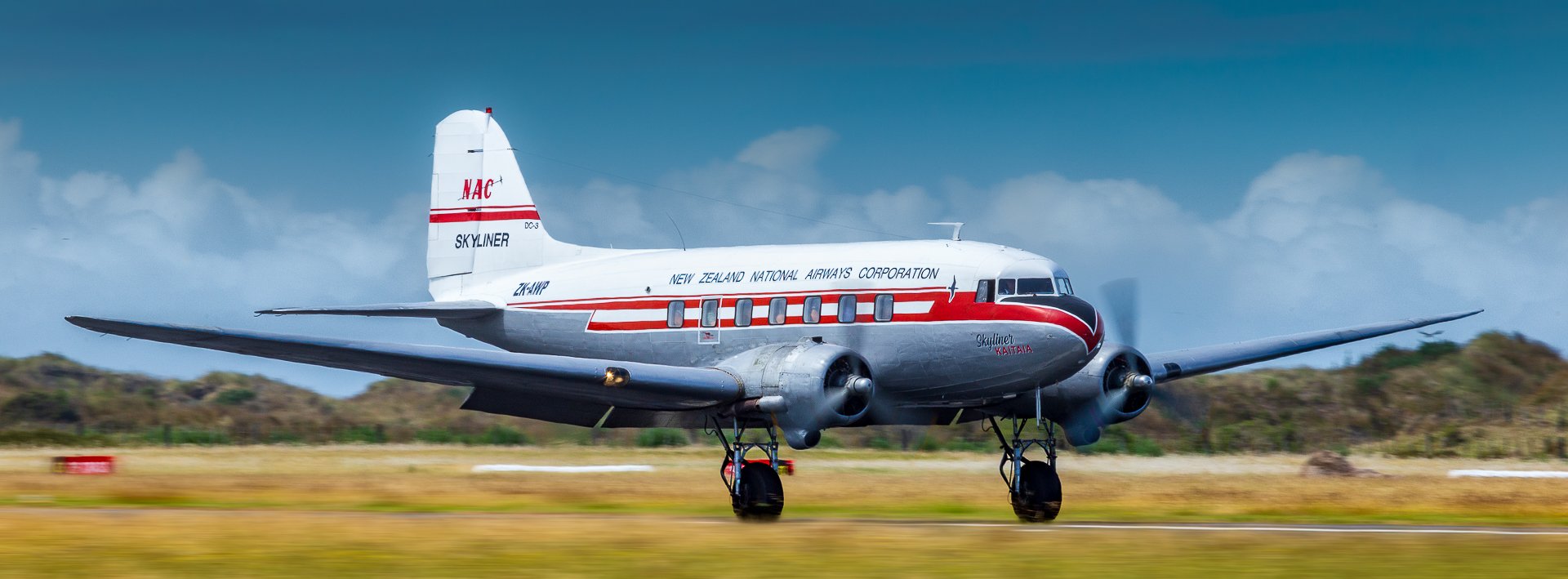Sopwith 7F1 Snipe
The Sopwith 7F.1 Snipe was a British single-seat biplane fighter aircraft developed and manufactured by the Sopwith Aviation Company. It was designed as a replacement for the highly successful Sopwith Camel and entered service with the Royal Air Force (RAF) in the latter months of World War I. First flown in 1917, the Snipe was powered by a Bentley BR2 rotary engine, which provided improved performance over its predecessor. It featured a more robust structure, better visibility for the pilot, and increased armament, typically consisting of two synchronized Vickers machine guns. Although it arrived too late to have a significant impact on the war, the Snipe proved to be an excellent fighter, combining good maneuverability with a higher speed and ceiling than the Camel. It remained in RAF service into the early 1920s, serving as the RAF's standard single-seat fighter until being replaced by the Gloster Grebe in 1924.
Douglas DC-3
The Douglas DC-3 is a propeller-driven airliner and transport aircraft that revolutionized air travel in the 1930s and 1940s. Developed by the Douglas Aircraft Company, it first flew in 1935 and was introduced into commercial service in 1936. The DC-3 was designed for longer, more comfortable passenger flights and could operate from short runways, making it versatile for both civilian and military use. Its rugged construction, reliability, and good handling characteristics made it immensely popular. During World War II, it was produced as the C-47 Skytrain for military transport, playing a crucial role in numerous operations, including the D-Day invasion. The DC-3's impact on aviation was so significant that it is often regarded as one of the most important transport aircraft ever made, with many still in service today, over 80 years after its introduction.
Consolidated PBY Catalina
The Consolidated PBY Catalina was an American flying boat and amphibious aircraft developed in the 1930s and widely used during World War II and beyond. First flown in 1935, it was designed by Consolidated Aircraft to meet the U.S. Navy's need for a long-range maritime patrol bomber. The Catalina was notable for its exceptional endurance, which allowed it to perform extended ocean patrols and search-and-rescue missions. It featured a high-wing configuration, twin radial engines, and a large hull that could land on both water and land (in its amphibious versions). During the war, PBYs served with several Allied nations in various roles including anti-submarine warfare, convoy escort, search and rescue, and long-range reconnaissance. The aircraft's versatility and reliability made it one of the most widely used seaplanes of all time, with many continuing in civilian service for decades after the war as water bombers, cargo, and passenger aircraft.
Supermarine Spitfire
The Supermarine Spitfire was a British single-seat fighter aircraft that played a crucial role in World War II, particularly during the Battle of Britain. Designed by R.J. Mitchell and produced by Supermarine Aviation Works, the Spitfire first flew in 1936 and entered service with the Royal Air Force in 1938. Known for its elliptical wing design, exceptional maneuverability, and powerful Rolls-Royce Merlin engine, the Spitfire became one of the most iconic and effective fighter planes of its era. Throughout the war, it underwent numerous improvements and variations, remaining in active service well into the 1950s and cementing its place in aviation history.




